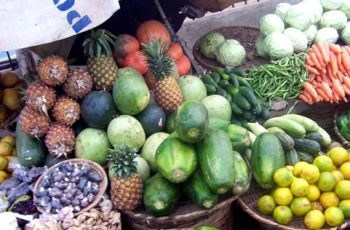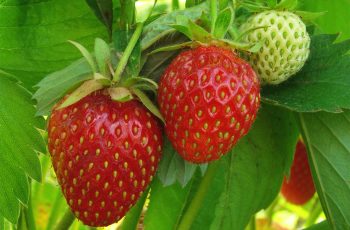How To Start Millet Farming In Nigeria And Earn Millions: Beginners Guide

Millet farming is another great opportunity for you to make millions from the agricultural sector in Nigeria. Millets are cereal crops or grains widely grown around the world for both fodder and human consumption. The millet farming is mostly done in the semi-arid tropics of African and Asia. In fact, 97% of millet production in the world comes from developing countries.
Read: How to start sorghum farming business in Nigeria
There are numerous varieties of millet that you can farm in Nigeria. These varieties include the pearl millet, finger millet, foxtail millet, and proso millet. Of all these millet varieties, the most widely cultivated is the pearl millet. Millet production in Nigeria is favored as a result of its productivity and very short growing season high-temperature, dry conditions.
The main objective of this article is to provide you with a millet production guide for starting your millet farming business in Nigeria. This article will be providing you with information regarding:
- Millet production in Nigeria
- Millet yield per hectare in Nigeria
- Millet production guide
- Finger millet production in Nigeria
- Pearl millet farming in Nigeria
- Millet nutrition, and
- Where to grow millet in Nigeria
How important is millet farming?
Millets are basically small grain cereals belonging to the grass family. Millet, just like other cereal crops like rice, maize, and sorghum are rich in carbohydrates. As the year 2016, Nigeria produced approximately 1.5 million metric tons of millet. In fact, you should know that Nigeria is the 5th largest producer of millet in the world.
See: How to rake millions from castor seed farming in Nigeria
For people living in the drier parts of countries like Nigeria, Niger, etc millet is a very important source of food for them. In foreign countries like North Korea, China, Burma, and India, millet has great local significance as a source of food. This goes to tell you that once you venture into millet farming agribusiness in Nigeria, you will have both local and international buyers. It only shows you that the profitability of millet farming is huge in Nigeria.
The economic potential of Millet farming business
According to statistics from the Food and Agricultural Organization, the global millet market is expected to reach a value of over US$ 13 million by the year 2022. This only tells you that there is a very bright future for millet production in Nigeria. It will certainly interest you to know that the sales of millet are expected to be on a high due to the increasing preference healthy and fiber-rich food by consumers.
Because of the way consumers are clamoring for healthy foods to maintain a healthy lifestyle, top and leading companies in the food industry are focusing on providing millet-based food globally. Starting your own millet farming venture will put in a position to also enjoy the million of money that will be generated from millets foods around the world.
Millet consumption rate
Although there is no accurate data available for most countries, it is estimated that above 80% of the world’s millet and over 95% in Africa and Asia is used as food. Most especially in the semi-arid part of Nigeria (Northern Nigeria). The remaining percent is used for livestock feed production, beer production, etc.
You should know that the consumption of millet is very high in countries that poor soils and low participation hinder the cultivation of other major food crops. Currently, in Nigeria, millet is used in the production of the local drink called Kunu and also one of the ingredients used in the production of Nunu (local milk drink) and Yoghurt.
Also Related: How to make millions from soybeans farming in Nigeria
Millet production in Nigeria has been of great help to beverage industries as millet is used in the production of beverages. People that are allergic to wheat can substitute it with millet. It will also interest you to know that millet is a major ingredient in seeded bread. In Nigeria, millet also serves as bird and animal feed.
How to cultivate your millet in Nigeria
Before you start your millet farming business, there is a need for you to gather all the necessary information regarding the planting of millet. You should have a millet production guide while starting your millet farming enterprise in Nigeria. Pearl millet is the most grown variety of millet in Nigeria, followed by the finger millet.
Generally, millets adapt to poor, droughty, and low fertile soils making them the most reliable cereal crop to grow under such unfavorable farming conditions in Nigeria.
Millet farming is also very much favored by high soil fertility and moisture in Nigeria. The millet yield per hectare in Nigeria is greatly influenced by irrigation and fertilizer applications. It is really worth noting that the millet yield per hectare in Nigeria is between 2-4 times higher when you make use of irrigation and fertilizer to improve the fertility of the soil on which the millet is planted.
Aside from irrigation and fertilizer application, you should know that the use of improved millet breeds also increases millet yield per hectare in Nigeria. This goes to tell you that there is no specified millet yield per hectare in Nigeria because it is dependent on the presence or absence of the aforementioned factors or variables. These improved millet breeds are also disease resistant and can greatly increase millet yield productivity in Nigeria.
Pests and diseases of millet in Nigeria
As a millet farmer in Nigeria that is into millet farming business, it is very important that you know the various millet pests and diseases. Your knowledge of these pests and diseases and how to prevent or control them will help improve your millet production in Nigeria.
The common diseases of millet which are mostly fungal include;
- Ergot
- Pearl millet Downey Mildew
- Rust
- Smut, and
- Cercospora leaf spot.
Some of the known pests that attack millets in the farm include the stem borers and grain midges which are of a regular occurrence. The spike worms are also becoming very critical in West Africa, especially Nigeria. The attack of millet pests like caterpillars, blister beetles, armyworms, chinch bugs, leaf beetles, head bugs contributes to severe millet yield losses in Nigeria.
There is also an increased incidence of millet storage pests during the rainy season, but with the help of cultural practices and resistant millet breeds, you can curb theses incidences effectively. You should also look out for the striga or purple witchweed during the course of your millet farming business in Nigeria.
When and how to harvest your millet

Millets attain maturity between 4-6 months after planting date, depending on the variety. You can harvest your millet by hand either by cutting the whole plant or cutting only the spike from the millet plant. If your millet farming business is in large-scale millet production in Nigeria, then you might consider the use of farm implements during harvest.
ATTENTION…
Contact us today on +2347037281050 for your well-detailed business plan on any business niche of your choice. We make sure that your business plan is ready within just 2 weeks of your order. Make that call today and you will be en route to taking your business to a higher level as we will help you to make sure that the implementation of the business plan is well executed.
For your contributions and comments on millet farming in Nigeria, you can make use of the comment box provided below.


samuel ojo
how to plant ugwu leaf / vegetables on a large scale
Okaria Odili Frankline
It’s already been made available for you on this platform. Thank you for stopping by Mr Samuel